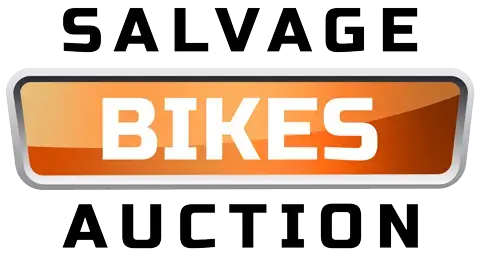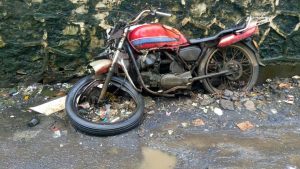Introduction
What is a salvage and repairable car?
A salvage and repairable car refers to a vehicle that has been involved in an accident, natural disaster, or other incident that has caused significant damage. These cars are typically deemed as ‘salvage’ by insurance companies, meaning that the cost to repair them exceeds their current value. However, despite their damaged condition, salvage and repairable cars can still hold value for those willing to invest the time and effort into restoring them. With the right skills and resources, these vehicles can be repaired and brought back to a roadworthy condition, offering an affordable option for car enthusiasts or individuals looking for a project. It is important to carefully assess the true value of a salvage and repairable car before making a purchase, taking into consideration factors such as the extent of damage, availability of replacement parts, and the overall cost of repairs. By understanding the true value of these cars, buyers can make informed decisions and potentially turn a salvage vehicle into a valuable asset.
Why is it important to assess the true value?
Assessing the true value of a salvage and repairable car is crucial for several reasons. Firstly, it allows potential buyers to make informed decisions and avoid overpaying for a vehicle that may require extensive repairs. Secondly, understanding the true value helps sellers determine a fair asking price, ensuring they receive a reasonable return on their investment. Additionally, assessing the true value provides insurance companies with accurate information to determine coverage and claim settlements. Lastly, evaluating the true value of a salvage and repairable car helps in assessing the feasibility of repairs and whether it is worth investing time and money into restoring the vehicle. Therefore, it is important to thoroughly assess the true value of a salvage and repairable car before making any buying or selling decisions.
Overview of the article
In this article, we will provide an overview of the key factors to consider when assessing the true value of a salvage and repairable car. We will discuss the importance of inspecting the car thoroughly, evaluating the extent of damage, and determining the potential repair costs. Additionally, we will delve into the significance of researching the car’s history, including its previous accidents and maintenance records. By understanding these factors, car buyers and sellers can make informed decisions and ensure they are getting the best value for their money. So, let’s dive into the details and explore the true value of salvage and repairable cars.
Understanding Salvage Titles

Definition and meaning of salvage titles
A salvage title refers to a designation given to a vehicle that has been deemed a total loss by an insurance company due to damage from an accident, natural disaster, or other significant event. This means that the cost of repairing the vehicle exceeds its current market value. When a car is issued a salvage title, it indicates that the car is not roadworthy and cannot be driven legally on public roads without undergoing extensive repairs and passing a thorough inspection. Salvage titles are typically given to cars that have undergone severe damage, such as structural damage or water damage. It is important for potential buyers to understand the definition and meaning of salvage titles when assessing the true value of a salvage and repairable car.
How salvage titles are issued
Salvage titles are issued to vehicles that have been deemed a total loss by an insurance company due to damage from accidents, natural disasters, or other incidents. When a car is declared a total loss, the insurance company takes ownership of the vehicle and issues a salvage title to indicate that it has significant damage and may not be safe to drive. These salvage titles serve as a warning to potential buyers that the vehicle has been extensively damaged and may require extensive repairs to be roadworthy again.
Implications of a salvage title
When it comes to buying a salvage and repairable car, understanding the implications of a salvage title is crucial. A salvage title indicates that the car has been deemed a total loss by an insurance company due to damage or theft. This means that the car has undergone significant repairs to make it roadworthy again. While purchasing a salvage car can offer significant cost savings, it is important to consider the potential drawbacks. These may include difficulty in obtaining insurance coverage, limited financing options, and potential safety concerns. It is essential for buyers to thoroughly research and inspect the vehicle before making a decision, as the implications of a salvage title can have long-term effects on the car’s value and performance.
Factors to Consider in Assessing Value

Extent of damage and repairs needed
The extent of damage and repairs needed is a crucial factor to consider when assessing the true value of a salvage and repairable car. This aspect determines the level of effort, time, and cost required to restore the vehicle to its pre-accident condition. The damage can range from minor cosmetic issues to major structural damage, affecting various components such as the engine, transmission, suspension, and body panels. Additionally, the repairs needed may involve replacing or repairing damaged parts, addressing electrical or mechanical issues, and ensuring the car meets safety standards. Evaluating the extent of damage and repairs needed provides valuable insight into the overall condition of the salvage car and helps determine its true value in the market.
Vehicle history and previous accidents
When assessing the true value of a salvage and repairable car, one crucial factor to consider is the vehicle’s history and any previous accidents it may have been involved in. The vehicle’s history provides valuable insight into its overall condition and potential future issues. By reviewing the vehicle’s accident history, including the severity of the accidents and the extent of the repairs needed, buyers can gauge the level of damage and determine if the car is worth investing in. Additionally, knowing the previous accidents can help buyers negotiate a fair price and make an informed decision about the vehicle’s value and reliability.
Market demand and resale value
Market demand and resale value play a crucial role in assessing the true value of a salvage and repairable car. Understanding the current market demand for these types of vehicles is essential as it directly impacts their resale value. Factors such as the availability of similar cars, consumer preferences, and the overall condition of the salvage car can influence its market demand and, consequently, its resale value. Additionally, market trends and fluctuations in the automotive industry can also affect the demand and resale value of salvage cars. Therefore, it is important to thoroughly research and analyze the market demand and resale value of a salvage and repairable car before making any purchasing or selling decisions.
Inspecting the Vehicle

Exterior inspection
When conducting an exterior inspection of a salvage and repairable car, there are several key factors to consider. First, examine the body panels for any signs of damage or previous repairs. Look for inconsistencies in paint color or texture, as these could indicate previous accidents. Additionally, check for rust or corrosion on the exterior surfaces, as this can affect the structural integrity of the vehicle. It is also important to inspect the headlights, taillights, and turn signals to ensure they are functioning properly. Finally, assess the condition of the tires and wheels, looking for any signs of excessive wear or damage. By thoroughly examining the exterior of the car, you can gain valuable insights into its true value and potential repair costs.
Interior inspection
When conducting an interior inspection of a salvage and repairable car, it is important to thoroughly examine the condition of the cabin. Start by checking the seats, dashboard, and steering wheel for any signs of damage or wear. Look for any stains, tears, or rips in the upholstery, as these can indicate previous accidents or neglect. Pay attention to the functionality of the car’s electronics, such as the air conditioning, radio, and power windows. Additionally, inspect the condition of the carpet and floor mats, as they can reveal potential water damage or mold. By carefully assessing the interior of a salvage car, you can gain valuable insights into its overall condition and make an informed decision about its true value.
Mechanical inspection
A crucial step in assessing the true value of a salvage and repairable car is conducting a thorough mechanical inspection. This inspection involves examining the car’s engine, transmission, suspension, brakes, and other key components to determine their condition and functionality. By carefully evaluating these mechanical aspects, potential buyers can gain insight into the extent of repairs and replacements needed, as well as the overall safety and reliability of the vehicle. Additionally, a comprehensive mechanical inspection can help uncover any hidden issues or damage that may not be immediately apparent. Therefore, it is essential to enlist the expertise of a qualified mechanic or technician who can provide an unbiased assessment of the car’s mechanical integrity. Taking the time to conduct a thorough mechanical inspection is a crucial step in accurately assessing the true value of a salvage and repairable car.
Evaluating Repair Costs

Obtaining repair estimates
When it comes to assessing the true value of a salvage and repairable car, obtaining repair estimates is a crucial step. Repair estimates provide an accurate assessment of the cost involved in restoring the car to its pre-damaged condition. By obtaining multiple repair estimates from reputable auto repair shops, you can compare the costs and determine the most cost-effective option. Additionally, repair estimates can help you negotiate the price of the salvage car with the seller or insurance company. It is important to carefully review the repair estimates and consider factors such as the quality of repairs, parts used, and the reputation of the repair shop before making a decision. Obtaining repair estimates is an essential part of the process to ensure you make an informed decision when assessing the true value of a salvage and repairable car.
Considering parts availability and costs
When assessing the true value of a salvage and repairable car, it is crucial to consider parts availability and costs. The availability of parts for a specific make and model can greatly impact the overall repair expenses. It is important to research and determine if the required parts are readily available in the market or if they need to be sourced from specialized suppliers. Additionally, the cost of these parts should be taken into account, as some rare or imported components can be significantly more expensive. By carefully considering parts availability and costs, car owners can make informed decisions about the feasibility and cost-effectiveness of repairing a salvage vehicle.
Assessing labor costs
When assessing the true value of a salvage and repairable car, one crucial aspect to consider is the labor costs involved. Labor costs can significantly impact the overall cost of repairing a salvage car, as skilled mechanics and technicians are required to restore the vehicle to its pre-accident condition. These labor costs include the hours spent on disassembling, repairing, and reassembling various components of the car, as well as any specialized tools or equipment needed. It is essential to carefully evaluate the labor costs associated with a salvage car to determine its true value and whether the repairs are financially viable.
Determining the True Value

Comparing the value to similar non-salvage vehicles
When assessing the true value of a salvage and repairable car, it is essential to compare it to similar non-salvage vehicles. This comparison allows for a more accurate evaluation of the car’s worth and helps determine whether the salvage car is a good investment. By comparing factors such as make, model, mileage, condition, and market demand, one can gauge how the salvage car’s value stacks up against its non-salvage counterparts. Additionally, this comparison provides insights into any potential repairs or modifications needed to bring the salvage car up to par with non-salvage vehicles, ultimately influencing its overall value.
Considering potential future issues
When considering potential future issues with a salvage and repairable car, it is important to take into account various factors. Firstly, the extent of the damage and the quality of the repairs done to the vehicle should be thoroughly assessed. This will help determine if any underlying issues may arise in the future. Additionally, the age and mileage of the car should be considered, as older vehicles with high mileage may be more prone to mechanical problems. It is also crucial to research the availability of parts and the cost of repairs for the specific make and model of the car. Lastly, consulting with a trusted mechanic or automotive expert can provide valuable insights into the potential future issues that may arise with a salvage and repairable car.
Negotiating the price
When it comes to negotiating the price of a salvage and repairable car, there are a few key factors to consider. First, it’s important to research the market value of similar vehicles in the area to get an idea of what a fair price would be. This will give you a starting point for negotiations. Additionally, you should thoroughly inspect the car and identify any repairs or issues that need to be addressed. Use this information to negotiate a lower price based on the estimated cost of repairs. Finally, be prepared to walk away if the seller is not willing to negotiate or if the price does not align with the car’s true value. Negotiating the price of a salvage and repairable car requires careful consideration and a willingness to stand firm on your desired price.










